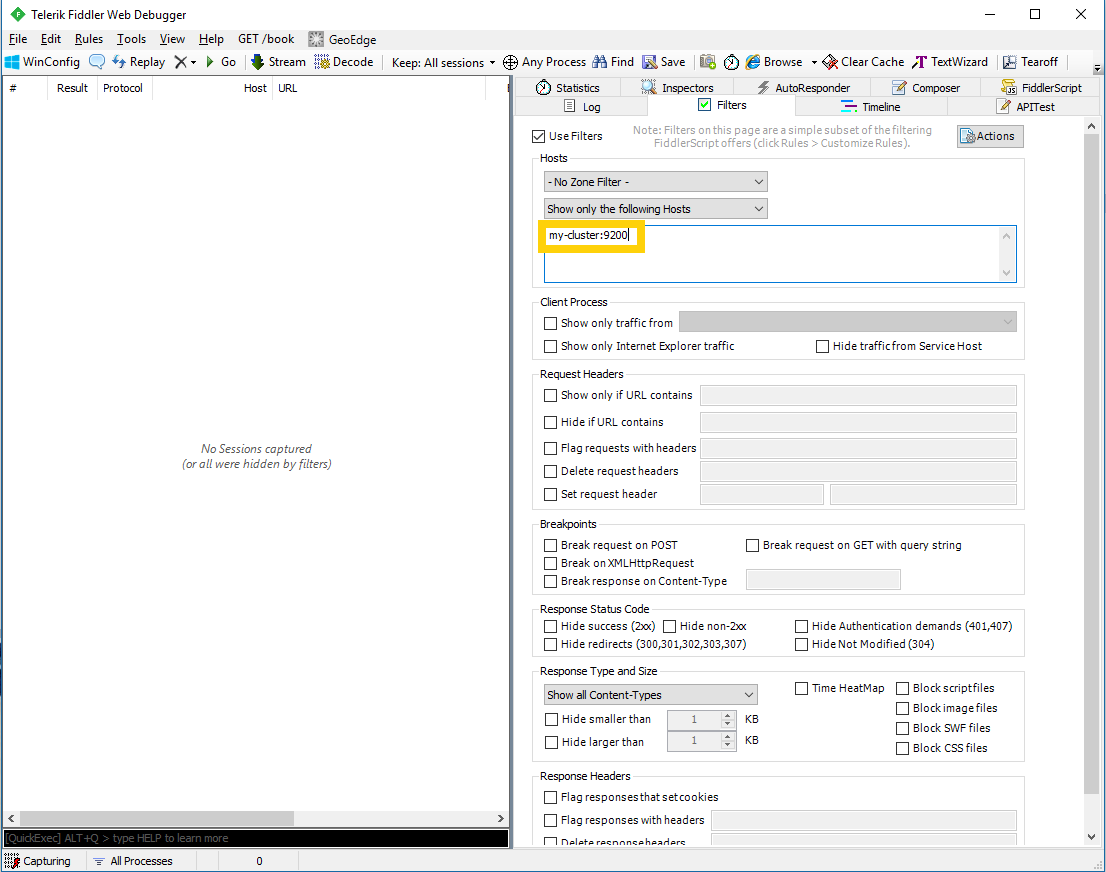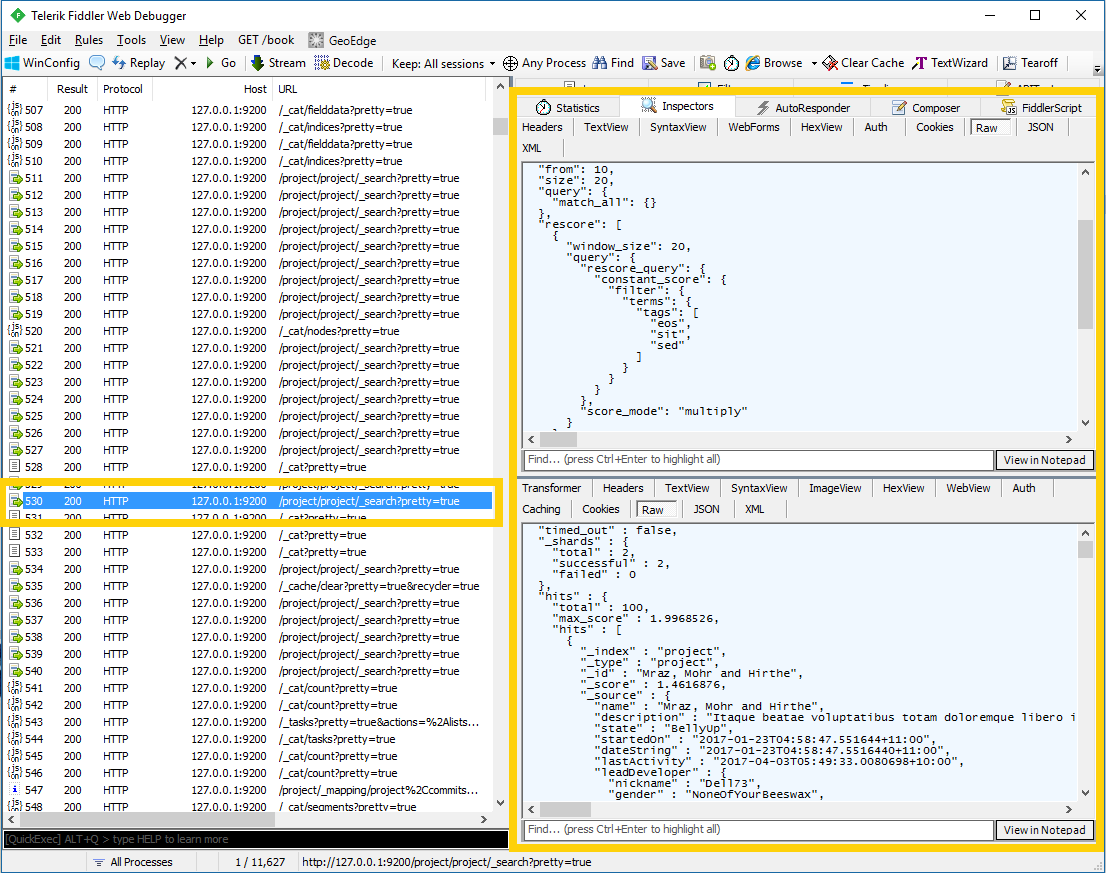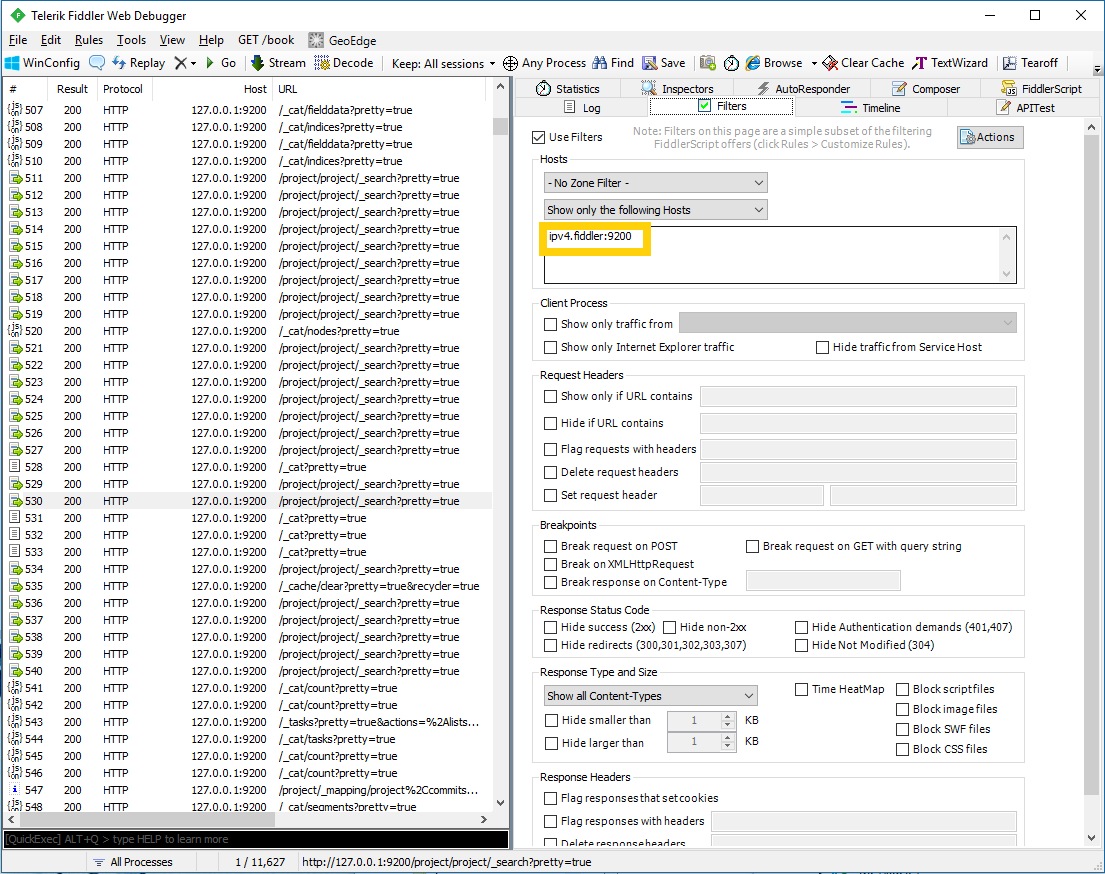- .NET Clients: other versions:
- Introduction
- Installation
- Breaking changes
- API Conventions
- Elasticsearch.Net - Low level client
- NEST - High level client
- Troubleshooting
- Search
- Query DSL
- Full text queries
- Term level queries
- Exists Query Usage
- Fuzzy Date Query Usage
- Fuzzy Numeric Query Usage
- Fuzzy Query Usage
- Ids Query Usage
- Prefix Query Usage
- Date Range Query Usage
- Long Range Query Usage
- Numeric Range Query Usage
- Term Range Query Usage
- Regexp Query Usage
- Term Query Usage
- Terms Set Query Usage
- Terms List Query Usage
- Terms Lookup Query Usage
- Terms Query Usage
- Wildcard Query Usage
- Compound queries
- Joining queries
- Geo queries
- Specialized queries
- Span queries
- NEST specific queries
- Aggregations
- Metric Aggregations
- Average Aggregation Usage
- Boxplot Aggregation Usage
- Cardinality Aggregation Usage
- Extended Stats Aggregation Usage
- Geo Bounds Aggregation Usage
- Geo Centroid Aggregation Usage
- Geo Line Aggregation Usage
- Max Aggregation Usage
- Median Absolute Deviation Aggregation Usage
- Min Aggregation Usage
- Percentile Ranks Aggregation Usage
- Percentiles Aggregation Usage
- Rate Aggregation Usage
- Scripted Metric Aggregation Usage
- Stats Aggregation Usage
- String Stats Aggregation Usage
- Sum Aggregation Usage
- T Test Aggregation Usage
- Top Hits Aggregation Usage
- Top Metrics Aggregation Usage
- Value Count Aggregation Usage
- Weighted Average Aggregation Usage
- Bucket Aggregations
- Adjacency Matrix Usage
- Auto Date Histogram Aggregation Usage
- Children Aggregation Usage
- Composite Aggregation Usage
- Date Histogram Aggregation Usage
- Date Range Aggregation Usage
- Diversified Sampler Aggregation Usage
- Filter Aggregation Usage
- Filters Aggregation Usage
- Geo Distance Aggregation Usage
- Geo Hash Grid Aggregation Usage
- Geo Tile Grid Aggregation Usage
- Global Aggregation Usage
- Histogram Aggregation Usage
- Ip Range Aggregation Usage
- Missing Aggregation Usage
- Multi Terms Aggregation Usage
- Nested Aggregation Usage
- Parent Aggregation Usage
- Range Aggregation Usage
- Rare Terms Aggregation Usage
- Reverse Nested Aggregation Usage
- Sampler Aggregation Usage
- Significant Terms Aggregation Usage
- Significant Text Aggregation Usage
- Terms Aggregation Usage
- Variable Width Histogram Usage
- Pipeline Aggregations
- Average Bucket Aggregation Usage
- Bucket Script Aggregation Usage
- Bucket Selector Aggregation Usage
- Bucket Sort Aggregation Usage
- Cumulative Cardinality Aggregation Usage
- Cumulative Sum Aggregation Usage
- Derivative Aggregation Usage
- Extended Stats Bucket Aggregation Usage
- Max Bucket Aggregation Usage
- Min Bucket Aggregation Usage
- Moving Average Ewma Aggregation Usage
- Moving Average Holt Linear Aggregation Usage
- Moving Average Holt Winters Aggregation Usage
- Moving Average Linear Aggregation Usage
- Moving Average Simple Aggregation Usage
- Moving Function Aggregation Usage
- Moving Percentiles Aggregation Usage
- Normalize Aggregation Usage
- Percentiles Bucket Aggregation Usage
- Serial Differencing Aggregation Usage
- Stats Bucket Aggregation Usage
- Sum Bucket Aggregation Usage
- Matrix Aggregations
- Metric Aggregations
Logging with Fiddler
editLogging with Fiddler
editA web debugging proxy such as Fiddler is a useful way to capture HTTP traffic from a machine, particularly whilst developing against a local Elasticsearch cluster.
Capturing traffic to a remote cluster
editTo capture traffic against a remote cluster is as simple as launching Fiddler! You may want to also filter traffic to only show requests to the remote cluster by using the filters tab

Capturing traffic to a local cluster
editThe .NET Framework is hardcoded not to send requests for localhost through any proxies and as a proxy
Fiddler will not receive such traffic.
This is easily circumvented by using ipv4.fiddler as the hostname instead of localhost
var isFiddlerRunning = Process.GetProcessesByName("fiddler").Any(); var host = isFiddlerRunning ? "ipv4.fiddler" : "localhost"; var connectionSettings = new ConnectionSettings(new Uri($"http://{host}:9200")) .PrettyJson(); var client = new ElasticClient(connectionSettings);
With Fiddler running, the requests and responses will now be captured and can be inspected in the Inspectors tab

As before, you may also want to filter traffic to only show requests to ipv4.fiddler on the port
on which you are running Elasticsearch.
